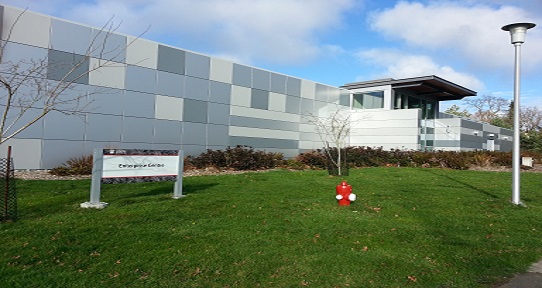Enterprise data centre - infrastructure expansion

Project completion
The Enterprise Data Centre infrastructure expansion was completed in April 2016.
Project information
The Enterprise Data Centre (EDC2) constructed in 2009 provides server and data processing capacity to support research and administrative functions at the university. The building design includes space that was reserved for future data expansion needs.As the capacity of the power and cooling infrastructure of the data equipment has been substantially utilized, an infrastructure expansion was required to provide additional power and associated cooling to satisfy the projected future data processing requirements.
Work was completed in two phases that involved new fluid coolers, air containment, a generator, fuel tank and acoustical mitigation. The work added new infrastructure on the roof of the building for the fluid coolers and the related acoustical and architectural screens. The screens are approximately 4m in height and are designed in a manner to meet the sound level requirements at the property line as set out in the municipal bylaw.
The new screens and related work tied into the architectural character of the existing facility. The District of Saanich Zoning Bylaw provides for rooftop equipment and associated screening. As a result, building height regulations in the bylaw did not apply to the additional rooftop infrastructure. A new generator and related fuel tank was also be installed adjacent to the existing generator and included an extension to the existing acoustical barrier, that is in place at the ground level.
For more information contact planning@uvic.ca
The Community Engagement Framework report provides for a consistent methodology to be used to determine the overall approach to an engagement program for campus land use planning and development projects. The project was assessed using Table 4.1 - Engagement Approach (see green highlighting).
An engagement approach, primarily in the inform category was determined for this project. The engagement approach was intended to provide key information to stakeholders and interested parties on and off campus and to allow for any questions on the project impacts to be addressed.
